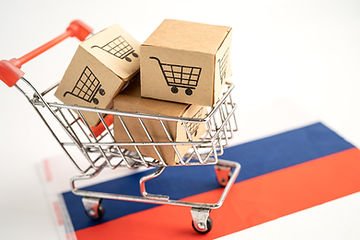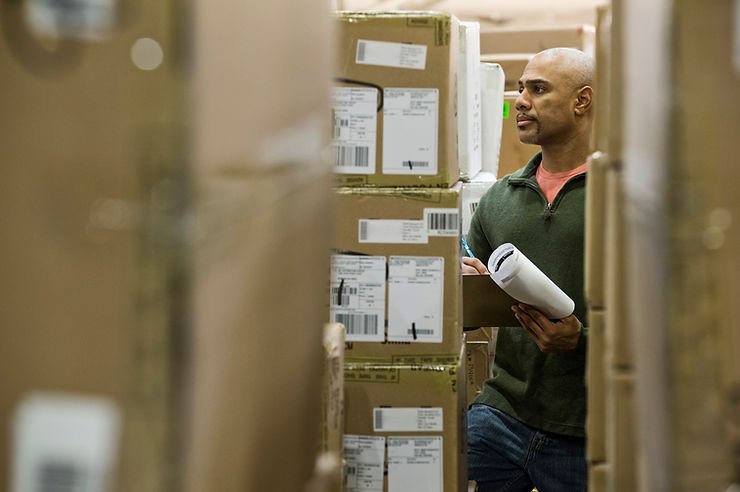How to Use Amazon FBA to Sell Wholesale Products
Using and leveraging Amazon FBA is not that difficult. You can do all of that through several steps, starting with researching the products you want to sell, registering on Amazon, setting up your account, selecting product lists, starting sending products to Amazon, then managing inventory, and finally, you can monitor the progress of your sales.
- Research Product
- Register as a Seller on Amazon
- Product List Selection
- Send Your Products to Amazon
- Manage Inventory
- Monitor Sales Progress
Research Product
Lights, camera, action! 🎬 Welcome to the glamorous world of product research, where the excitement never ends in the quest for Amazon FBA success. Just like a thrilling adventure film, this journey is filled with twists and turns, as you hunt for hidden gems in the vast marketplace. Picture yourself as the protagonist, armed with your wit and determination, ready to uncover the wholesale products that will propel you to stardom as an Amazon FBA superstar.
In today’s interconnected digital landscape, online marketplaces have become the epicenter of commerce, and establishing your presence in this realm is key to success. Whether you’re a budding entrepreneur looking to start an ecommerce business or an established ecommerce company seeking to expand your horizons, the opportunities in online sales are boundless. With the right e-commerce platform, you can unleash the full potential of your online store, catering to both business-to-business (B2B) and business-to-consumer (B2C) markets. So, let’s explore the strategies and insights that will empower you to build, optimize, and grow your own ecommerce store in a world where services online have become paramount to business success.

Spy on the Competition
Analyzing the top-selling products in your chosen niche within the world of electronic commerce, or e-commerce, is akin to cracking the code of a complex mystery. It involves taking meticulous notes on the patterns that emerge as you delve deeper into the data. Understanding the supply chain, e-commerce transactions, consumer-to-business interactions, and the various aspects of the fulfillment process is crucial for any entrepreneur looking to generate revenue in this digital age. Additionally, conducting research on consumer behavior, shopping habits, and the role of email marketing, social media accounts, and online shopping in today’s business landscape can be the key to developing a successful business idea and launching a thriving e-commerce site. Shoppers increasingly prefer to shop online, making it essential to decipher the intricacies of e-commerce stores to unlock the secrets of top-selling products and achieve success in this competitive market.
Keep your eyes peeled for the golden trifecta: products with a high sales volume, low competition, and consistent demand.
It’s crucial to recognize that your ecommerce store is the epicenter of your online retail universe. The success of your business online hinges on the seamless orchestration of e-commerce transactions through your e-commerce website. Whether you are a seasoned online retailer or venturing into the digital landscape for the first time, your e-commerce store is not merely a virtual storefront but the foundation of your business model.
In a world where physical stores coexist with e-commerce businesses, your online presence can make or break your brand. With the proliferation of e-commerce platforms, the opportunities to sell online have never been more accessible. The key is to leverage your ecommerce website effectively, creating a user-friendly and engaging interface that captivates your audience and converts visitors into loyal customers. Remember, your business website isn’t just a place to sell products; it’s a digital embodiment of your brand, a reflection of your values, and a channel to nurture lasting customer relationships. So, let’s embark on this journey to unlock the full potential of your own website in the ever-evolving world of e-commerce.🕵️♂️
Harness the Power of Amazon Tools
Venturing into the Amazon FBA realm is like embarking on a thrilling expedition to uncover hidden treasure troves, and there’s a veritable gold rush of tools at your disposal to ensure you strike it rich. Trusty sidekicks like Jungle Scout, Helium 10, and Viral Launch act as your personal gold panning kits, helping you sift through the vast product landscape with the precision of a seasoned prospector. These invaluable resources are designed to help you unearth products with the potential to skyrocket your sales, transforming you into an e-commerce tycoon. But don’t forget about Amazon’s own arsenal of powerful tools – the trusty compass and map of your FBA journey. The Best Seller Rank (BSR) serves as your guide to the hottest items in each category, while the Amazon Sales Estimator provides crucial insight into the sales volume of products across the marketplace. By harnessing the power of these tools, you’ll navigate the treacherous terrain of Amazon FBA with confidence and expertise, ultimately discovering the golden nugget that sets you on the path to e-commerce success.🔧
Supplier Directories Are Your New BFFs
Forge new alliances with supplier directories like Alibaba, Global Sources, and ThomasNet. These directories are the matchmakers of the wholesale world, connecting you with manufacturers and suppliers who can provide you with the products of your dreams. Be sure to vet each supplier and request samples to ensure the quality and authenticity of the products.👫

Keep an Eye on Trends
Are fidget spinners still a thing? Not really, but you get the point. Staying up-to-date with emerging trends is crucial in the fast-paced world of Amazon FBA. Use tools like Google Trends, TrendHunter, and social media platforms to identify hot products that are gaining traction. If you can predict the next big thing, you’ll be the Nostradamus of the Amazon FBA universe.📈
Product Research is a Marathon, Not a Sprint
Channel your inner tortoise and remember that slow and steady wins the race. It’s easy to get caught up in the excitement of finding a potential product, but don’t jump the gun. Conduct thorough research and validate your product ideas before committing to a large inventory order. This will save you time, money, and countless headaches down the road.🏃♀️
Register as a Seller on Amazon
Get ready for your Amazon FBA journey! The first step is registering as a seller on Amazon, and we’re here to guide you like a trusty sidekick. This adventure is all about exploring a vast online marketplace filled with eager customers and countless products. We’ll make this journey entertaining and informative, helping you choose your seller persona, build a captivating brand, and become an e-commerce hero. Think of it as the blockbuster of the e-commerce world, with you as the star and us as your director. So, gear up like an e-commerce Indiana Jones, and let’s dive into the thrilling world of Amazon FBA. We’re here to make every step exciting and help you achieve your online retail dreams.
In your quest for online business success, exploring innovative online business ideas is as crucial as navigating Amazon’s FBA platform. Just as Amazon thrives in online retail, harnessing the power of digital marketing is key to attracting new customers and making your mark in the e-commerce industry. Developing a solid business plan and leveraging e-commerce software are essential steps to transform your online businesses into successful ventures. Much like Amazon, e-commerce companies have shown that the online world is ripe with opportunities. So, as we embark on this journey together, keep in mind that with the right strategies and determination, you can carve out your own place in the ever-expanding landscape of e-commerce. Let’s delve deeper into these digital realms and unveil the secrets to online business triumph.
Registering as a seller on Amazon is a straightforward process. Just follow these steps to set up your Amazon Seller account and start selling:

- Visit Amazon Seller Central: Head to the Amazon Seller Central website (https://sellercentral.amazon.com) and click the “Sign up” button to begin the registration process.
- Create an Amazon account: If you already have an Amazon account, sign in with your existing credentials. If you don’t have an account, click “Create your Amazon account” and follow the prompts to set up a new account with your name, email, and password.
- Choose your seller plan: Amazon offers two primary seller plans – Individual and Professional. Individual plans are for casual sellers who plan to sell fewer than 40 items per month, while Professional plans are for those who intend to sell more than 40 items per month. Review the details of each plan and choose the one that best suits your needs.
- Provide seller information: You’ll need to provide some basic information about yourself or your business, including your legal name, address, and phone number.
- Set up billing and deposit information: Provide your credit card information for billing purposes, and your bank account information for receiving payments from Amazon. Make sure your credit card and bank account are valid and in good standing.
- Complete your tax identity information: Amazon requires tax identity information from all sellers. You’ll need to provide your tax identification number (TIN), which could be your Social Security Number (SSN) or Employer Identification Number (EIN), depending on whether you’re an individual or a business.
- Choose your store name: Your store name will be visible to customers and should reflect your brand. Choose a name that is unique, memorable, and relevant to the products you plan to sell.
- Set up your shipping options: If you plan to use Fulfillment by Amazon (FBA), you can skip this step, as Amazon will handle shipping for you. However, if you’re planning to fulfill orders yourself, you’ll need to set up shipping options for your customers, including shipping rates and carrier preferences.
- Create product listings: Once your seller account is set up, you can start creating product listings. You’ll need to provide detailed information about each product, including product titles, descriptions, images, and prices. Be sure to optimize your listings with relevant keywords to help customers find your products.
- Launch your store: After completing all the necessary steps, your Amazon Seller account should be ready to go. Begin listing your products and start selling!
Product List Selection

Step right up, aspiring Amazon FBA maestros, and prepare to conduct the symphony of product list selection! 🎼 In this crucial act of your e-commerce opus, you’ll orchestrate a harmonious blend of products to delight your audience and catapult your Amazon FBA venture to center stage. As the master composer of your online retail masterpiece, you’ll skillfully weave together an ensemble of items that resonate with your target market, creating a symphony that captures their attention and inspires their loyalty. This delicate balancing act requires a keen understanding of your niche, an awareness of market trends, and the ability to anticipate the needs and desires of your customers.
In the grand concert hall of Amazon FBA, your product list serves as the sheet music guiding your performance, each note carefully chosen to create a compelling and memorable experience for your audience.
Like a virtuoso conductor, you’ll carefully calibrate your product list, ensuring each item plays its part in perfect harmony with the others. From the attention-grabbing crescendos to the soothing adagios, every element of your product selection must be crafted with precision and care, reflecting the unique melody of your brand. As you lead your e-commerce orchestra through this melodious journey, remember that the key to success lies in your ability to continually adapt and refine your composition, embracing innovation and creativity to keep your Amazon FBA performance fresh and captivating. So, grab your baton and step up to the podium – it’s time to bring your e-commerce symphony to life!
Imagine you’ve chosen the eco-friendly home goods niche for your Amazon FBA business. Here’s a sample product list selection that demonstrates the principles of curating a captivating and balanced product lineup for your customers:

Reusable Beeswax Food Wraps 🐝
High demand, low competition, and an eco-friendly alternative to single-use plastic wrap make them a crescendo product in your list.
Stainless Steel Drinking Straws 🥤
A popular and affordable item that appeals to environmentally conscious consumers looking to reduce their plastic waste.
Bamboo Toothbrushes 🦷
A biodegradable option for daily dental care, offering a range of bristle types and pack sizes to cater to various customer preferences.
Solar-Powered LED Garden Lights 🌞
An energy-saving outdoor lighting solution that adds a touch of sustainability to home gardens, with various designs to suit different tastes.
Organic Cotton Mesh Produce Bags 🍎
A reusable, stylish, and practical alternative to single-use plastic bags for grocery shopping, available in different sizes and colors.
Recycled Glass Drinking Bottles 💧
A durable and stylish beverage container that reduces plastic bottle waste, featuring unique designs to set your brand apart.
Natural Air Purifying Bags (Activated Charcoal) 🌿
A chemical-free air freshener and deodorizer for home or car use, available in various sizes and scents for a personalized touch.
Plant-based Biodegradable Cleaning Sponges 🧽
A sustainable cleaning solution for eco-conscious households, with options for multipacks and various sponge types to meet different cleaning needs.
Send Your Products to Amazon

Sending your products to Amazon is an essential step in leveraging the Fulfillment by Amazon (FBA) program, which allows you to tap into its world-class logistics network and offer your customers an exceptional shopping experience. By storing your inventory in Amazon’s vast and sophisticated fulfillment centers, you’re not only streamlining your operations but also positioning your business for success in the competitive e-commerce landscape. This strategic move frees you from the hassle of storage, order fulfillment, and shipping, enabling you to focus on expanding your product offerings, refining your marketing strategies, and scaling your business to new heights. With Amazon’s impressive delivery capabilities and robust infrastructure, you can ensure quick and efficient delivery of your products to customers, ultimately boosting customer satisfaction and fostering brand loyalty.
Embracing the FBA program is a powerful way to elevate your e-commerce venture and catapult your business into the big leagues of online retail.
To send your products to Amazon, follow these steps:

- Create a Shipping Plan: Log in to your Amazon Seller Central account and navigate to the “Inventory” tab. Select the products you want to send to Amazon, click “Action on Selected,” and choose “Send/Replenish Inventory.” This will prompt you to create a shipping plan, where you’ll provide information about the products, their packaging, and the quantity you’re sending.
- Prepare Your Products: Ensure your products are properly packaged and labeled according to Amazon’s requirements. This includes using scannable barcodes, adhering to packaging guidelines, and following any specific requirements for your product category.
- Label Your Shipments: Generate and print the Amazon shipment labels from Seller Central. Attach these labels to the outside of each box in your shipment, ensuring they’re clearly visible and not covering any seams or closures.
- Choose a Carrier: Select a carrier to transport your products to Amazon’s fulfillment centers. Amazon has partnered with several carriers, such as UPS and FedEx, to offer discounted shipping rates for FBA sellers. You can compare the available options and choose the one that best suits your needs.
- Schedule a Pickup or Drop-off: Arrange for your chosen carrier to pick up your shipment or drop it off at the carrier’s location. Ensure you have all the necessary documentation, such as the shipping labels and the bill of lading, if applicable.
Sample Scenario
Imagine you’re an Amazon FBA seller specializing in premium coffee mugs. Here’s a sample scenario for sending your products to Amazon:

- You’ve decided to send 500 coffee mugs to Amazon’s fulfillment centers. In Seller Central, you create a shipping plan, specifying the product details, packaging dimensions, and quantity.
- You prepare your coffee mugs by placing each mug in a protective box and sealing it securely. You attach scannable barcodes to each box to comply with Amazon’s labeling requirements.
- You pack the coffee mugs into larger shipping boxes, with 25 mugs in each box, and print the Amazon shipment labels. You affix one label to the outside of each shipping box, making sure it’s easily visible and not covering any seams.
- After comparing the available carrier options, you decide to use UPS for shipping your products to Amazon’s fulfillment centers. You take advantage of Amazon’s discounted shipping rates for FBA sellers.
- Finally, you schedule a pickup with UPS, ensuring your shipment is ready and all required documentation is in order. The carrier picks up your shipment and transports it to the designated Amazon fulfillment center, where your products will be stored and shipped to customers as orders are placed.
Manage Inventory

Managing inventory on Amazon FBA is crucial because it directly impacts the success and profitability of an e-commerce business. One of the primary reasons for maintaining proper inventory management is to prevent stockouts. Running out of products can lead to lost sales, disappointed customers, and a negative impact on your seller rating. When sellers have adequate stock levels, they can consistently meet customer demand, leading to increased customer satisfaction and loyalty.
Another critical aspect of managing inventory on Amazon FBA is optimizing storage costs. Amazon charges FBA sellers based on the storage space their products occupy in the fulfillment centers. Efficient inventory management helps sellers avoid overstocking, reducing storage fees, and preventing potential long-term storage penalties. By maintaining optimal inventory levels, sellers can minimize holding costs and ensure a healthy cash flow, which is essential for the ongoing success of any business.
Effective inventory management plays a significant role in improving seller performance ratings. Amazon measures sellers’ performance through various metrics, including order defect rate, pre-fulfillment cancel rate, and late shipment rate. Proper inventory management helps sellers maintain high-performance metrics by preventing stockouts, delays, or cancellations due to unavailability. By consistently meeting customer expectations and maintaining high-performance ratings, sellers can enjoy better visibility on the marketplace, access to Amazon’s Buy Box, and increased sales, leading to a thriving and successful e-commerce business.
Monitor E-commerce Sales Progress

Tracking sales data allows sellers to identify successful products, trends, and strategies that can be leveraged for future growth. By evaluating sales progress, sellers can make informed decisions about their product selection, pricing, and marketing tactics. Regularly reviewing sales performance helps in recognizing opportunities for expansion, as well as identifying areas that may need improvement, leading to a more profitable and sustainable business.
By monitoring customer feedback, reviews, and ratings, sellers can gain valuable insights into what their customers value most. This information can be used to improve product quality, enhance customer service, and tailor marketing efforts to better resonate with the target audience. Prioritizing customer satisfaction is essential for building a loyal customer base and maintaining a positive reputation in the competitive Amazon marketplace.
Monitoring sales progress is essential for effective inventory management and forecasting. By analyzing historical sales data, sellers can identify patterns and trends that can help predict future demand. Accurate sales forecasting enables businesses to optimize inventory levels, preventing stockouts or overstocking and ensuring a healthy cash flow. Furthermore, sellers can use sales progress data to identify seasonal fluctuations, enabling them to plan and strategize for peak periods, promotional events, or sales campaigns. In summary, managing sales progress is key to making informed business decisions, optimizing operations, and driving the long-term success of your Amazon FBA business.
Are you considering joining the exciting world of Amazon FBA in the near future? Are you still curious about the ins and outs of this incredible platform, wondering how it could potentially transform your e-commerce business? Eager to learn more about the benefits, strategies, and best practices to excel in the Amazon FBA sphere? Look no further; we have the perfect solution for you! Book your spot now, and embark on a thrilling adventure with Amazon FBA, setting the stage for your business’s success and long-term profitability!

